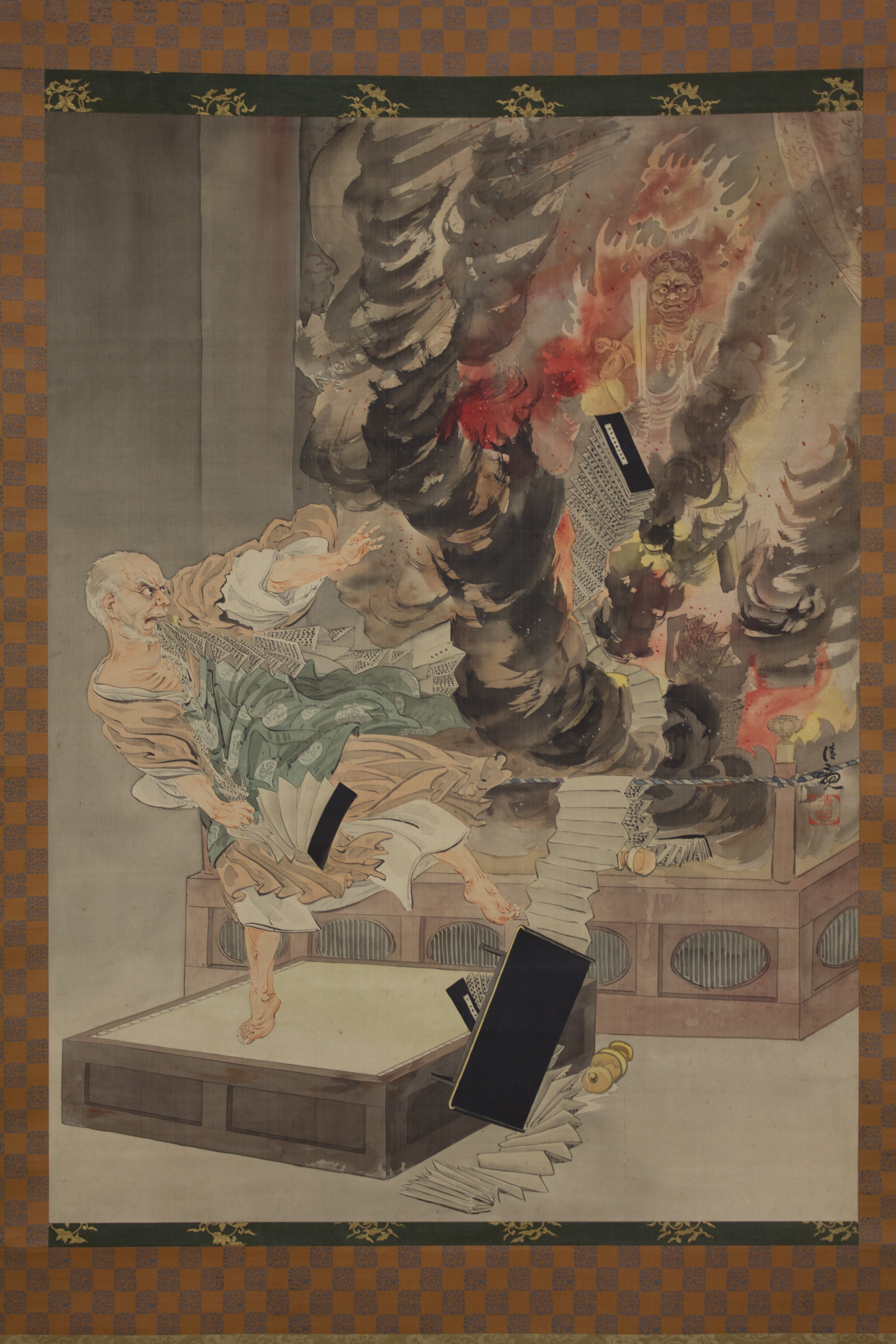The Fury of Monk Raigō
Kobayashi Kiyochika Japanese
Kobayashi Kiyochika’s painting captures the intensity and drama of the quasi-historical incident of Monk Raigō (1002–1084) flying into a rage during a goma-e, or esoteric Buddhist fire ritual. Raigō was furious that Emperor Shirakawa reneged on a promise to allow his temple to conduct ordination ceremonies after he had successfully performed magical rituals to ensure the safe birth of a royal heir. In the artist’s rendering, the monk lurches away from the altar, ritual implements are scattered, sutra books in accordion format have unfanned and topple to the floor; and a small side-table for offerings is captured in free-fall. Flames and smoke surge from the central hearth where the goma-e fire ritual practiced by esoteric Buddhist monks would have normally been carried out according to calm and highly regulated protocol.
Earlier publications refer to this painting image simply as “Fudō Myōō” (Sanskrit: Acala), referring to the depiction of the statue of the Buddhist protective deity at the center of this ritual, seemingly arising from the flames. Usually Fudō Myōō, the “Immovable Wisdom King,” is shown with a fearsome visage, yet Kiyochika playfully gives the statue an expression of surprised horror at the monk’s temper tantrum. According to legend, which was further elaborated on in popular literature and theatre, Raigō in protest also starved himself to death and was reborn as a monstrous “iron rat” (tesso), and he and his army of rats attacked the Miidera and destroyed statues and sutras—an inspiration for subsequent imagery of sutra tearing and book burning. The crown prince of Emperor Shirakawa tragically died as an infant at the age of three, reputedly due to the curse of Raigō.
Due to rights restrictions, this image cannot be enlarged, viewed at full screen, or downloaded.
This artwork is meant to be viewed from right to left. Scroll left to view more.





